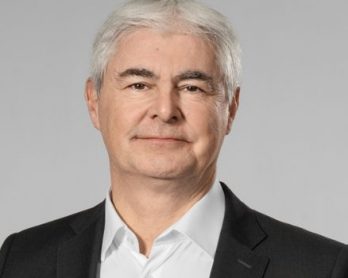How Brands and Instagrammers Can Spot Fake Influencers

Many influencers on Instagram are just like the Wizard of Oz.
They huff and puff, put on a big display to impress you with their social media numbers… followers, engagement, even brand deals.
But when you peek behind the curtain, you’re faced with the nasty truth: Some are nothing more than an illusion – all smoke and mirrors.
This is because they built their influence using tricks and short cuts to attract followers without putting in the time and effort needed to attract a genuinely engaged audience.
Instead, their emphasis is on acquiring followers quickly, so they can impress brands into sponsoring content with them.
So how do you get a peek behind the curtain?
Fortunately, there is a tool that can help you do this. However, let’s first take a look at the strategies many Instagrammers use to grow their accounts quickly, with minimal effort and that jeopardize the very influence they are trying to build.
Let’s dive in…
#1: Buying fake followers
We’ve talked about this problem before but unfortunately it still persists.
This is obvious but buying fake followers is a poor strategy because they are not real people. Instead, they are bots, idle or stolen accounts that don’t engage with your content.
It’s by no means limited to beauty influencers!
It’s a common problem found in many business niches including fashion, travel and food to name just a few. No matter the niche, however, the trouble is some people are still trying to short cut their way to becoming an influencer, achieving status that they haven’t earned and don’t deserve.
Fortunately, brands are getting wise to this and influencer platforms and tools are getting better at spotting the strategy as you’ll see.
#2: The follow/unfollow strategy
This a common strategy used by Instagrammers and it’s simple: they follow accounts who might be interested in their content, wait a few days, and then unfollow them hoping they don’t notice.
If they don’t notice, they’ve kept them as followers while keeping their own follower count low.
The reason is simple:
Keeping the number of people you follow low in relation to the number of people who follow you tells the Instagram algorithm that you are influential and your account is a good one. It’s why you’ll often see huge accounts with millions of followers follow very few (if any) in return.
Okay, so what’s so bad about the follow/unfollow strategy?
First, automatically following and unfollowing is a direct violation of Instagram’s terms and conditions – so it’s not a good idea.
Also, it’s acting like a spammer, and Instagrammers who use this trick are manipulating (rather than persuading) users’ attention.
While this method can grow an Instagram follower count, they’re not growing the audience they really want to influence.
Therefore, even if they manage to grow their account to tens of thousands of followers but have little to no engagement, it isn’t worth it.
And know this, the followers who don’t engage are known as ghost followers. Attract too many of them and they’ll drag down an account so it gets less organic reach.
This is because Instagram tends to show users posts that are liked and commented on more than others.
While analyzing hundreds of Instagram accounts the folks at HypeAuditor have noticed that users who practice follow/unfollow have a bigger percentage of ghost followers than those who don’t.
That’s something a good influencer doesn’t want.
Here’s a quick peek at what their tool can reveal:
HypeAuditor gives brands and marketers a significant peek behind the curtain so no one can play Wizard of Oz and fool you.
From the example above, we can see what percentage of the followers are real people, how many of them are other influencers (not a bad thing mind you), mass followers and suspicious accounts (likely bots).
So, in the case of this influencer, we know that her “reachability” to her followers can be improved and that the authenticity percentage can be improved too – the 48.8% number above indicates room for improvement as the average for accounts her size (50k) is about 61%.
HypeAuditor also points out that this influencer is using Instagram engagement pods (more on this later).
I checked with the influencer and she confirmed she’s using them for engagement and she was shocked that a tool could pick up on that.
#3: Loop Giveaways
A loop giveaway on Instagram consists of a dozen or more accounts teaming up to buy a prize, and then creating a “loop” of steps that users are required follow in order to enter to win the giveaway.
The entrants are required to follow every account in the loop in order to enter to win, thus an influencer could theoretically come away with hundreds or even thousands of new followers.
But all the new followers acquired from a loop giveaway likely followed to enter the contest and not because they’re interested in the content.
Many of the new followers will unfollow shortly after the content is complete or turn into ghost followers.
#4: Engagement pods
Commonly known as Instagram pods or boost groups, these are private groups of twenty or more Instagrammers who team up to grow their Instagram engagement with the aim of getting more followers.
Pod members communicate with each other via messenger, usually Telegram, to keep the conversation off the Instagram and Facebook platforms so they don’t get detected. The trick works because every time someone in the pod publishes a new Instagram post, they share it in the group message thread. Pod members will then click on the post, like it, and leave a comment.
This method will increase engagement, but only while the Instagrammer remains in the pod. Once they leave the group engagement will drop. Also, many engagement pods are made up of accounts that aren’t in the same niche, so the audience they’re collecting is disparate and not focused on the core audience they want to reach.
Another problem is that engagement pods usually don’t stick around for long as the members usually aren’t concentrated on helping each other over an extended period of time.
That’s because they get distracted and stop being active.
Like the other tricks above, this one doesn’t help collect focused, quality followers. It helps to collect followers for the sake of followers and nothing else.
#5: Paid Shout-outs
An Instagram shout-out is a post in other content creator’s account, presenting it to their followers and suggesting that they follow the account.
Generally, a shout-out is a good practice, but many creators use it incorrectly. The mistake they make is to collaborate with special shout-out pages or non-relevant creators.
But it gets worse:
Some unscrupulous shout out accounts buy bots for their “advertisers” in order to justify the cost of a shout-out.
They lose because even though they get a bunch of new followers many of these new followers are inactive and bots.
So how does an Instagrammer legitimately build influence?
Okay, now that you know the pitfalls, let’s spend some time talking about what Instagrammers can do to legitimately build a following, credibility and influence.
Tip #1: Publish Good Quality Content – Consistently
High quality photos are important, but the truth is there’s need to spend money on an expensive camera. A mobile phone camera is just fine.
But don’t just focus on good photos. Captions are also important because they are the key to having a bigger and better reach.
Good captions are the best way to inspire followers to comment on posts.
So be sure to post genuine opinions, thoughts and observations. This is a big component to showing individuality and personality.
Good captions can also motivate others to take an action.
Tip #2: Show up and engage with followers
People like to know they are valued for their thoughts and opinions, so show up and be present and respond.
Engaging with followers is a good way to get them talking.
The easiest way is to ask questions, as it encourages people to stop and comment instead of just scrolling past. Also, people love to give their opinions, so Instagrammers should use this to their advantage.
Additionally, engage with other creators in the niche.
Regularly comment on their posts and don’t forget to also respond to the comments received. This shows people that they are valued.
Tip #3: Do shout-outs with relevant content creators
As I said earlier, shout-outs are one of the tools that can help to grow an audience, but they have to be done correctly.
First, be sure to collaborate with relevant influencers within the same niche.
Secondly, Instagrammer should check the influencers for authenticity using HypeAuditor. Don’t be fooled by fancy pictures and a big follower count. Be sure to check their engagement rate at the very least. Like a brand, Instagrammers should check other Instagrammers for veracity.
HypeAuditor will generate a report that will shows the quality of the audience of any Instagrammer including where their likes and comments come from.
Tip #4: Leverage official Instagram ads
Think about spending some money on Instagram ads. It’s is a good way to grow a following, but the result depends on creativity and targeting.
Study your audience carefully and pay attention to who engages the most. Then target the ad to a similar audience.
For example:
If the core audience likes content about beauty and fragrance and they are between 25 and 35 years old, then target these people with ads.
Also, if you plan to boost a post, make sure it speaks to the audience. If the account is mostly about make-up, share some tips and secrets. Together with a fantastic photo this will produce a better result.
Tip #5: Use narrow, well defined hashtags
People don’t search for interesting accounts under broad hashtags like #beauty, #love, #instagram and so on. They are too broad, and the selection is endless.
Instagrammers who use hashtags like these will get lost in the giant sea of Instagram and no one will find them.
Instead use more specific and relevant tags like #beautyqueens, #browtinting, #makeuplesson and others that are used less often and more descriptive.
Another reason to use more limited hashtags is to protect the account from users who practice the follow/unfollow method. Also it attracts followers who actually like the content who are relevant to the niche and content.
Wrapping Up
Identifying quality influencers takes time. The good news is that tools are now available to do so. Also, building influence on Instagram takes a lot of time and effort.
It’s human nature to want to find shortcuts to get there faster -by brands and influencers alike. This should be resisted by both.
Brands should be careful about who they are working with and Instagrammers shouldn’t shortchange themselves by following questionable methods to grow their accounts.
Instead, brands should focus on relevant, quality influencers who have genuine influence with their followers. Influencers should focus on organic growth, mindful content creation, and consistent analytics.
Both sides should use tools like HypeAuditor to peek behind the curtain, so they don’t get fooled by those pretending to be the Wizard of Oz.






